Frequently Asked Questions (FAQ)
Your go-to guide for understanding the palm oil industry and gaining insights into sustainability, environmental impact, and industry practices.


As the world grapples with balancing economic development with environmental imperatives, Malaysian palm oil stands out as a case study of how a major global commodity can align economic success with sustainability. Assessing the industry’s progress over the last decade reveals FIVE key areas where it sets a benchmark for other commodities.
1. SUSTAINABLE PRODUCTION PRACTICES
Malaysia is the global leader in promoting sustainable palm oil production, and it has also shown a path for other commodities worldwide. The Malaysian Sustainable Palm Oil (MSPO) certification, mandatory for all Malaysian palm oil producers, ensures that palm oil is produced in an ecologically, economically, and socially responsible manner. This certification scheme demonstrates how governments, industry, and farmers can collaborate to build a successful, internationally recognised sustainability system.
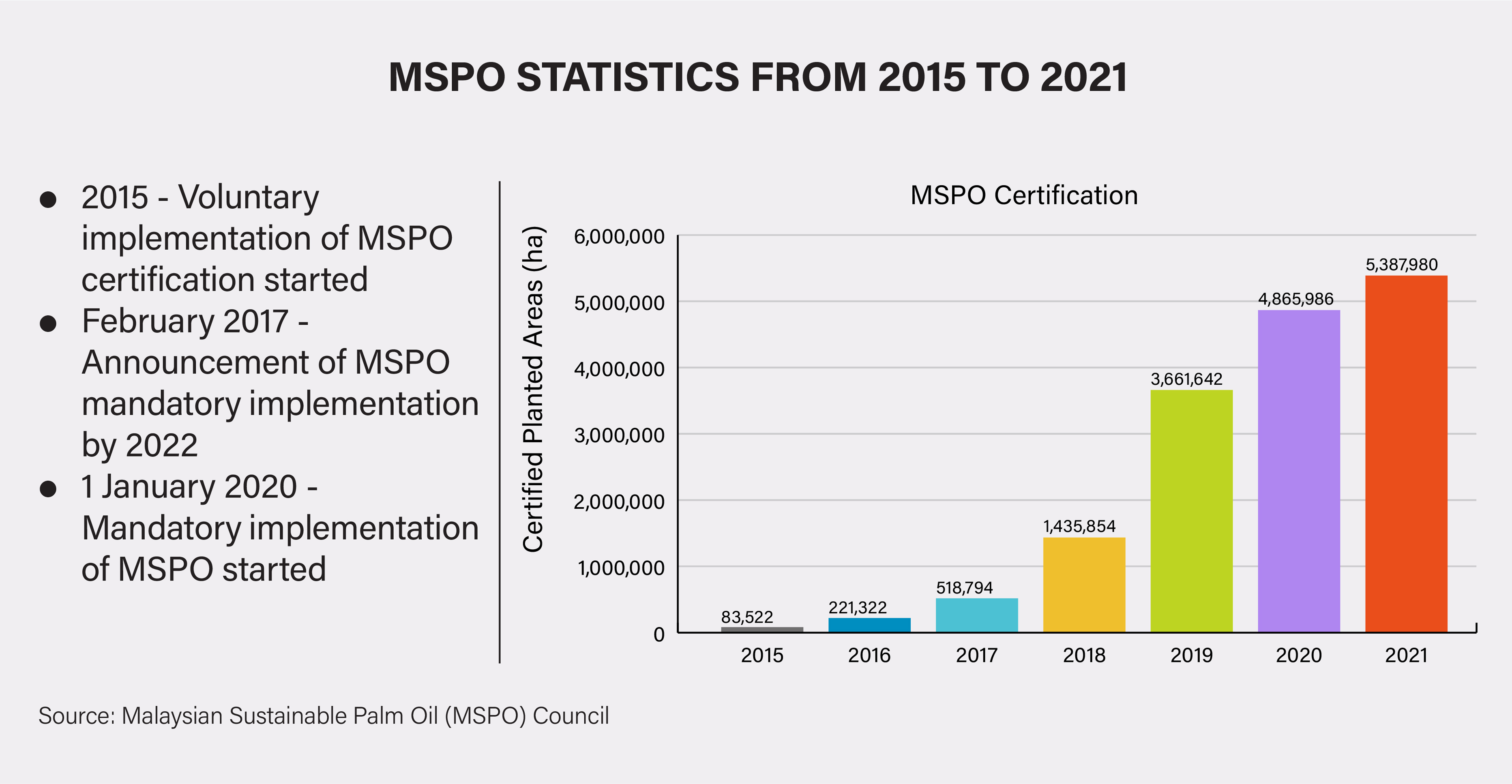
2. EFFICIENT LAND USE
Palm oil is known for its high yield per hectare compared to other oilseed crops. This means less land is required to produce the same amount of oil, reducing the impact on forests and biodiversity. This model of high-yield crop production is significant for global commodities, especially in the context of increasing demand for agricultural land and the urgency of preserving natural carbon sinks. Malaysia has prioritised research and development, cross-breeding, replanting support for small farmers, and other policy tools to continue increasing yields.
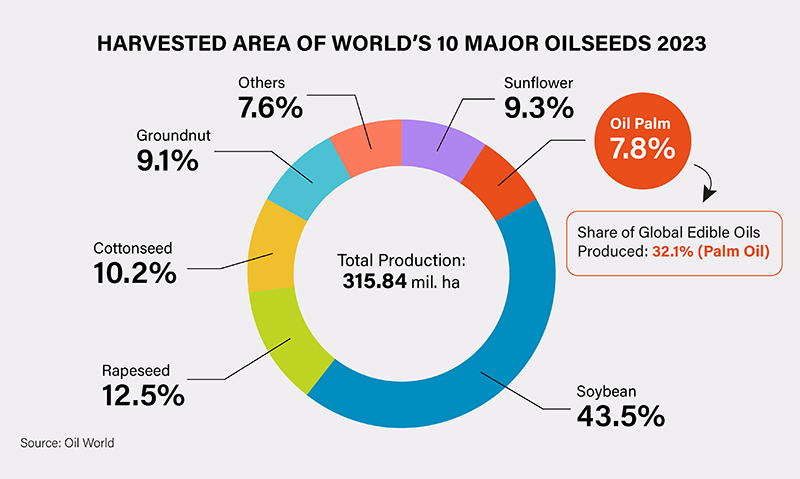
3. ECONOMIC DEVELOPMENT
The palm oil industry is a key driver of the Malaysian economy and has been instrumental in poverty alleviation and rural development. This demonstrates how a well-managed commodity sector can have a far-reaching, positive economic impact, serving as a template for other countries looking to develop their agricultural sectors.
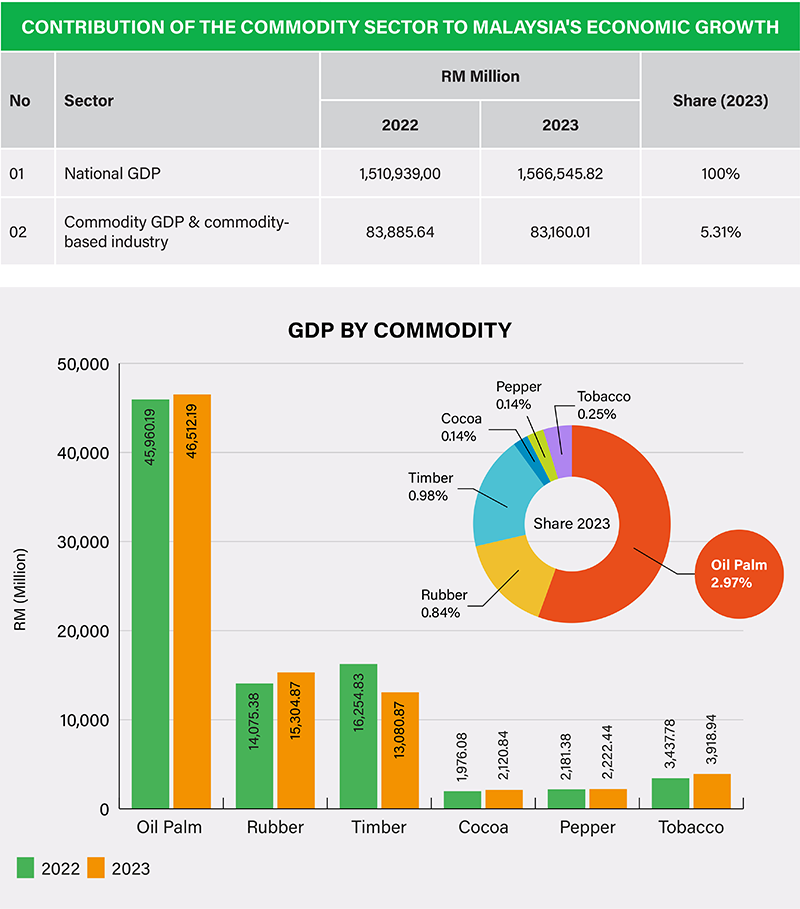
Note: Share is GDP share to National GDP
4. INNOVATION AND VALUE ADDITION
Malaysia invests heavily in research and development in the palm oil sector. This has led to innovations in cultivation, harvesting and processing techniques, and the development of value-added products such as speciality fats and biofuels. This focus on innovation and diversification can serve as a model for other commodity sectors seeking to enhance value while promoting sustainability.
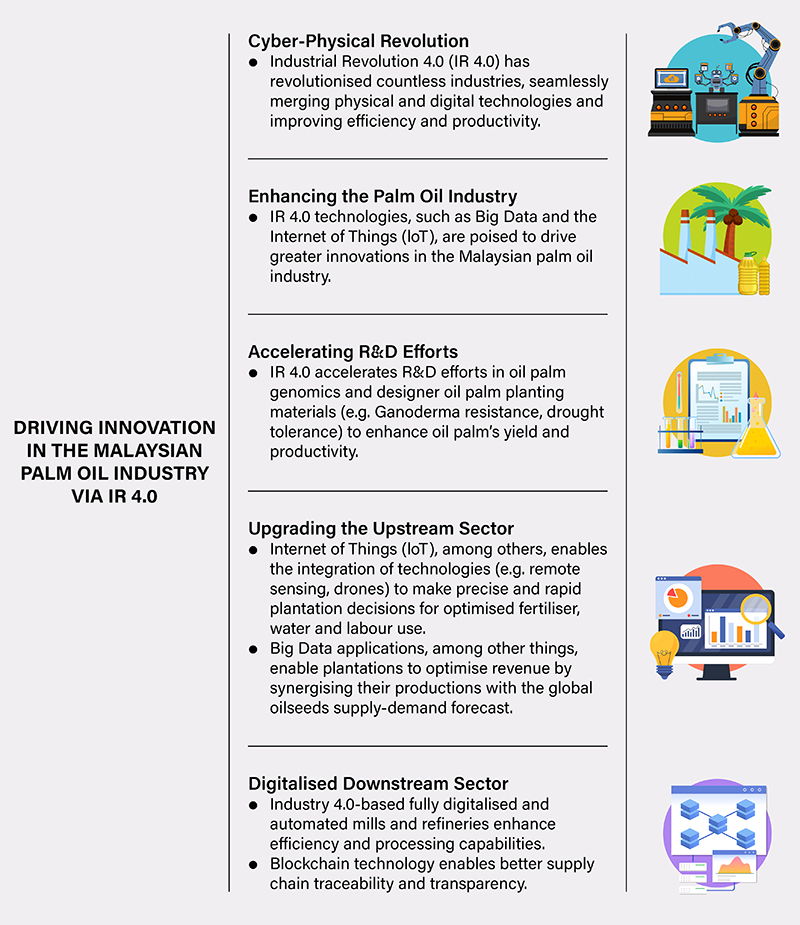
5. COMMITMENT TO REDUCING ENVIRONMENTAL IMPACT
The Malaysian palm oil industry has proactively adopted practices to reduce its environmental footprint. This includes efforts to preserve wildlife habitats, reduce the use of pesticides and fertilisers, limit greenhouse gas emissions, and recycle and use waste byproducts. Such environmental stewardship is essential for the sustainability of global commodities.
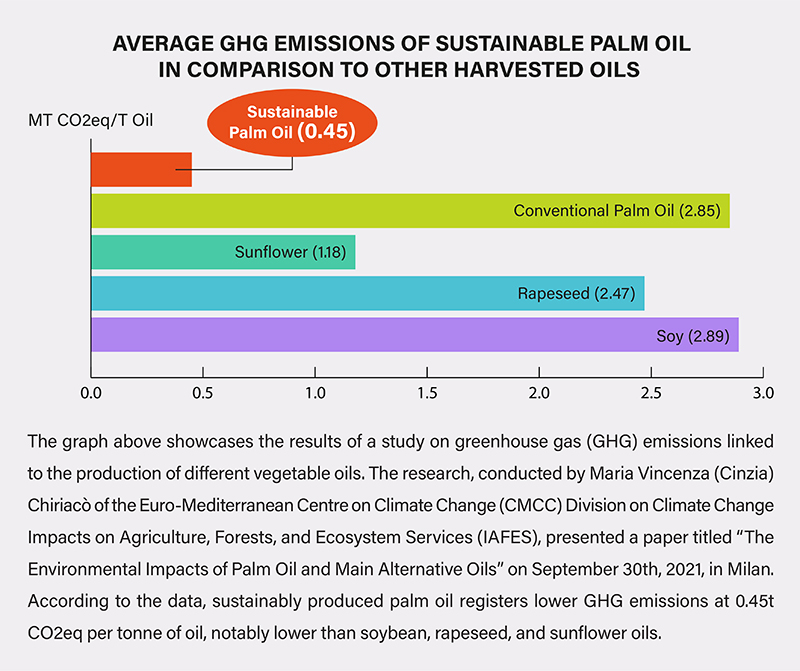
Source:
These successes of the Malaysian palm oil industry - reducing inputs, increasing outputs, and promoting recycling and reuse - offer valuable lessons for other global commodities that can and should be replicated.






